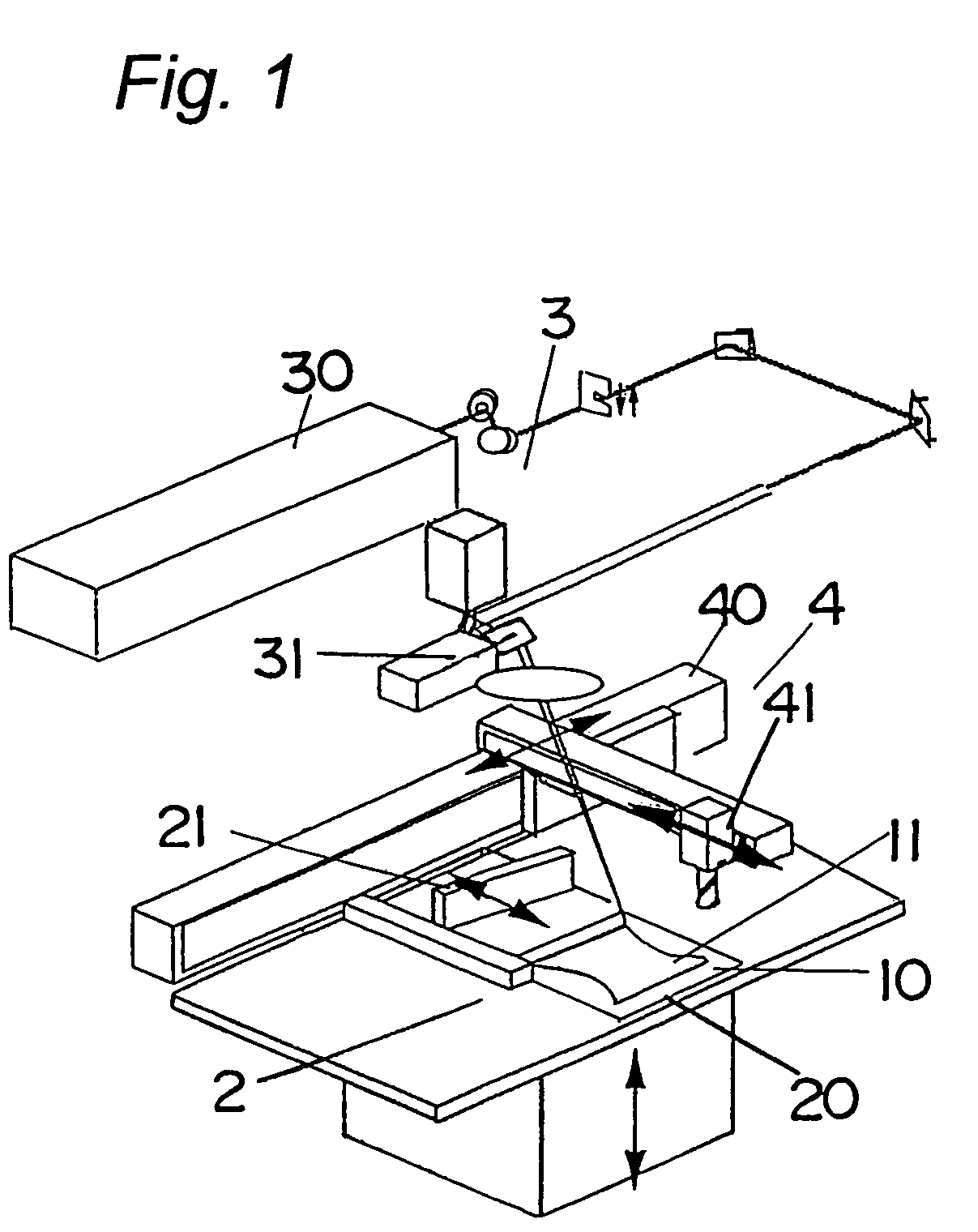Metal powder composition for use in selective laser sintering
a technology of laser sintering and metal powder, which is applied in the direction of process efficiency improvement, transportation and packaging, additive manufacturing, etc., can solve the problems of reduced packing density of powder composition, difficult formation of powder layer, and inability to uniformly form thin powder layer, etc., to achieve easy separation, large heat contraction, and improved shape
- Summary
- Abstract
- Description
- Claims
- Application Information
AI Technical Summary
Benefits of technology
Problems solved by technology
Method used
Image
Examples
examples
[0059]Six kinds of metal powder compositions were prepared using SCM440 (chrome molybdenum steel) powder that is mainly composed of aspherical particles and has an average particle diameter of 20 μm (see FIG. 4), Ni (nickel) powder that is mainly composed of spherical particles and has an average particle diameter of 30 μm (see FIG. 5), and CuMnNi (copper-manganese alloy made of, for example, Cu-10 wt % Mn-3 wt % Ni) powder that is mainly composed of spherical particles and has an average particle diameter of 30 μm (see FIG. 6). The six kinds of metal powder compositions were added with a varying proportion of C (graphite) as indicated below.
[0060]a) 70 wt % SCM440-21 wt % Ni-9 wt % CuMnNi
[0061]b) 70 wt % SCM440-21 wt % Ni-9 wt % CuMnNi+0.2 wt % C
[0062]c) 70 wt % SCM440-21 wt % Ni-9 wt % CuMnNi+0.4 wt % C
[0063]d) 70 wt % SCM440-21 wt % Ni-9 wt % CuMnNi+0.5 wt % C
[0064]e) 70 wt % SCM440-21 wt % Ni-9 wt % CuMnNi+0.75 wt % C
[0065]f) 70 wt % SCM440-21 wt % Ni-9 wt % CuMnNi+1.0 wt % C
[00...
PUM
| Property | Measurement | Unit |
|---|---|---|
| particle diameter | aaaaa | aaaaa |
| weight percent | aaaaa | aaaaa |
| particle diameter | aaaaa | aaaaa |
Abstract
Description
Claims
Application Information
 Login to View More
Login to View More - R&D
- Intellectual Property
- Life Sciences
- Materials
- Tech Scout
- Unparalleled Data Quality
- Higher Quality Content
- 60% Fewer Hallucinations
Browse by: Latest US Patents, China's latest patents, Technical Efficacy Thesaurus, Application Domain, Technology Topic, Popular Technical Reports.
© 2025 PatSnap. All rights reserved.Legal|Privacy policy|Modern Slavery Act Transparency Statement|Sitemap|About US| Contact US: help@patsnap.com



